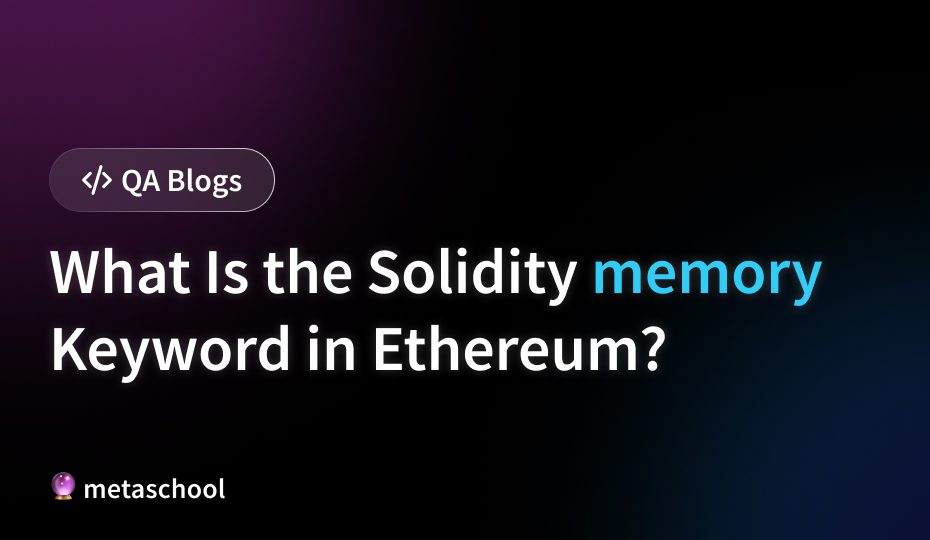Table of Contents
Smart contracts are the backbone of decentralized apps. They handle the storage and manipulation of data. Solidity is the language of Ethereum. It lets you store data in memory or storage during the contract execution. Now, let’s dig into a cool part of their work: solidity memory. Think of it as a short-term memory for a computer, kind of like its RAM.
Memory in Solidity
In Solidity, think of memory as a quick storage spot mostly holding function details and local bits of info. Unlike storage, which sticks around even after the job is done, memory is more of a temporary helper.
Because memory space is limited, we have to actively clear out local stuff once a function is done. Every time a function actively calls, it makes new local spots in memory. This is why it’s crucial to actively be smart about using them.
🔥 Check this out: Build in Public
Example of Memory in Solidity
Let’s illustrate the concept with a simple Solidity smart contract:
pragma solidity ^0.8.9;
contract memoryExampleContract {
function setRecentYear() public pure returns (uint[5] memory)
{
uint[5] memory year;
year[0] = 2024;
return year;
}
}Smart Contract Declaration:
- The contract, named
memoryExampleContract, is declared in Solidity. - The compiler version is specified as ^0.8.9.
Function to Set Recent Year:
- The contract includes a publicly accessible and pure function,
setRecentYear. - Within this function, a dynamic array named
yearis declared in memory to store a singleuintvalue. - The value of
year[0]is set to 2024. - The function returns the array
yearas a memory reference. - The “year” array is automatically deleted from memory once the function concludes.
🔥 Check this course out: Build on Move on Sui and Explore its Applications
Conclusion
Solidity memory is a temporary data storage space, much like a computer’s RAM. It’s fast at grabbing info, making it great for dealing with data that doesn’t need to stick around. But developers need to watch out for memory limits and use them wisely to make smart contracts work their best.
As the decentralized world keeps changing, getting how memory and storage work in Solidity becomes super important for crafting smart contracts that are both efficient and secure.
Tried this out? Let us know how it went by taking a screenshot and tagging Metaschool on your Social Media!
Follow us on –
🔮Twitter – https://twitter.com/0xmetaschool
🔗LinkedIn – https://www.linkedin.com/company/0xmetaschool/
